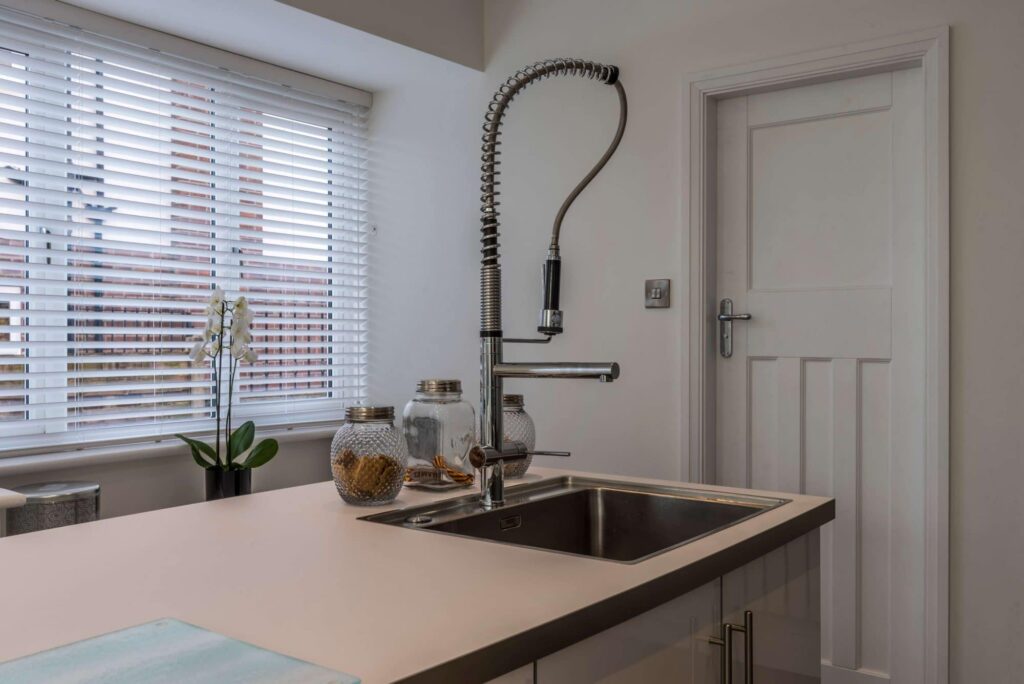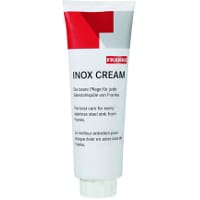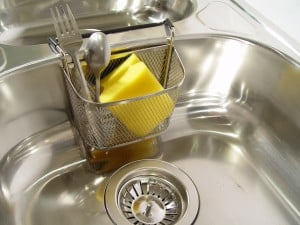We take care of your build
If so, you’ll be in safe hands with Adamson’s. Got a question, want an idea of price or ready to book your FREE home design visit?

Stainless steel is the most popular material for sinks for good reason. It looks stunning in modern and traditional kitchens with a timeless quality. It is also highly resistant to damage and staining, meaning it looks at its best for years.
The durability and beauty of a stainless steel sink can be prolonged even further with proper care.
A good habit to get into is to wipe down your sink after every use with a damp cloth and soapy water. This simple action will prevent the build-up of limescale and dirt, keeping your sink clean, fresh and shining. Remember after rinsing to dry the sink thoroughly with a soft cloth.

Stainless steel sink in kitchen by Adamsons
As the name suggests, stainless steel is very resistant to staining. However, hard water can sometimes leave limescale or mineral deposits on the surface of the sink. This then absorb stains from tea, coffee, wine and other staining food and drink. If this happens simply rinse down the sink and dry thoroughly, making sure all areas of limescale have been removed.
Stainless steel sinks should not rust, the material is actually incapable of doing so under normal household conditions. If you see rust on your sink, it is probably small iron or normal steel particles left behind, possibly from water deposits or more likely from steel wool scouring pads (a quick note to say NEVER use steel wool scourers!) The particles adhere to the surface of your sink and rust, leaving stains behind. To get rid of these rust stains, use a mild cleaning agent containing oxalic acid such as Bar Keepers Friend® and then rinse away.
Don’t worry if you notice small surface scratches on your sink or the signs of use over time; this is called the patina and these scratches will even out and blend. The scratches very rarely run deep so are not a cause for concern, instead they form a patina unique to your sink. Franke have developed Inox Cream to help blend scratches and restore the lustre of stainless steel sinks. You can get it here. Remember to always wipe with the grain of the sink.

Plastic washing up bowls – they could get pieces of grit and glass stuck to the bottom of them and scratch the sink.Bleach – this harsh cleaner can cause corrosion and discolouration.
Silver dip cleaners – they will dull the surface of your sink.
Leaving certain foods on the sink surface for too long, such as citrus fruits, vinegar, salt, mustard and mayonnaise as they may cause corrosion.
Using steel wool scouring pads – they will scratch the sink and leave particles on the surface which will adhere and rust.
Leaving any wire scourers or utensils sitting in the sink for too long as they could rust and mark your sink.

Keep sponges and utensils in a useful caddy
I hope the above information will be useful in helping you get the best out of your stainless steel sink for years to come.
If you don’t have a stainless steel sink, the everyday cleaning information is still useful as it applies to every type of sink. Also keep your eyes peeled for future content on the specifics of taking care of sinks made from other materials.
